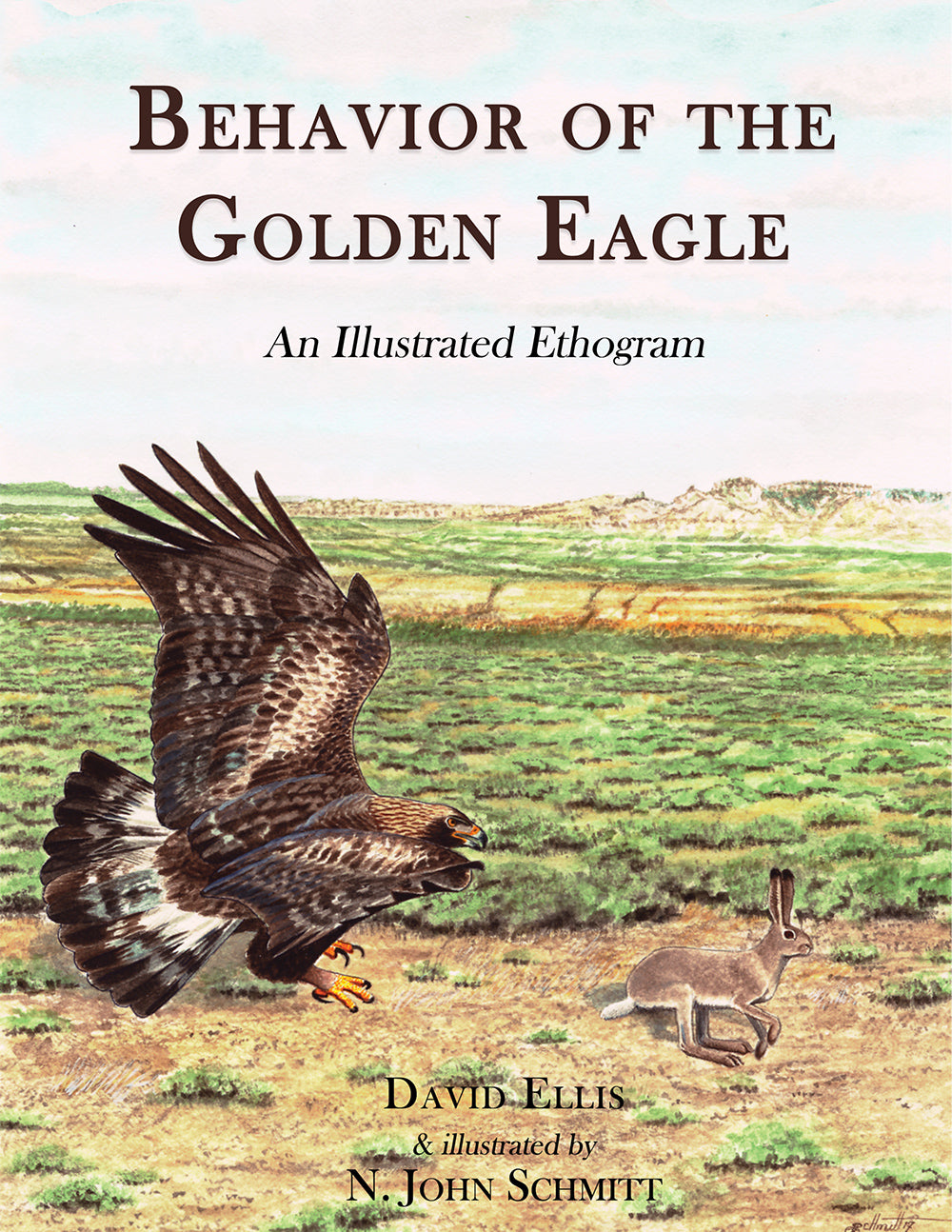

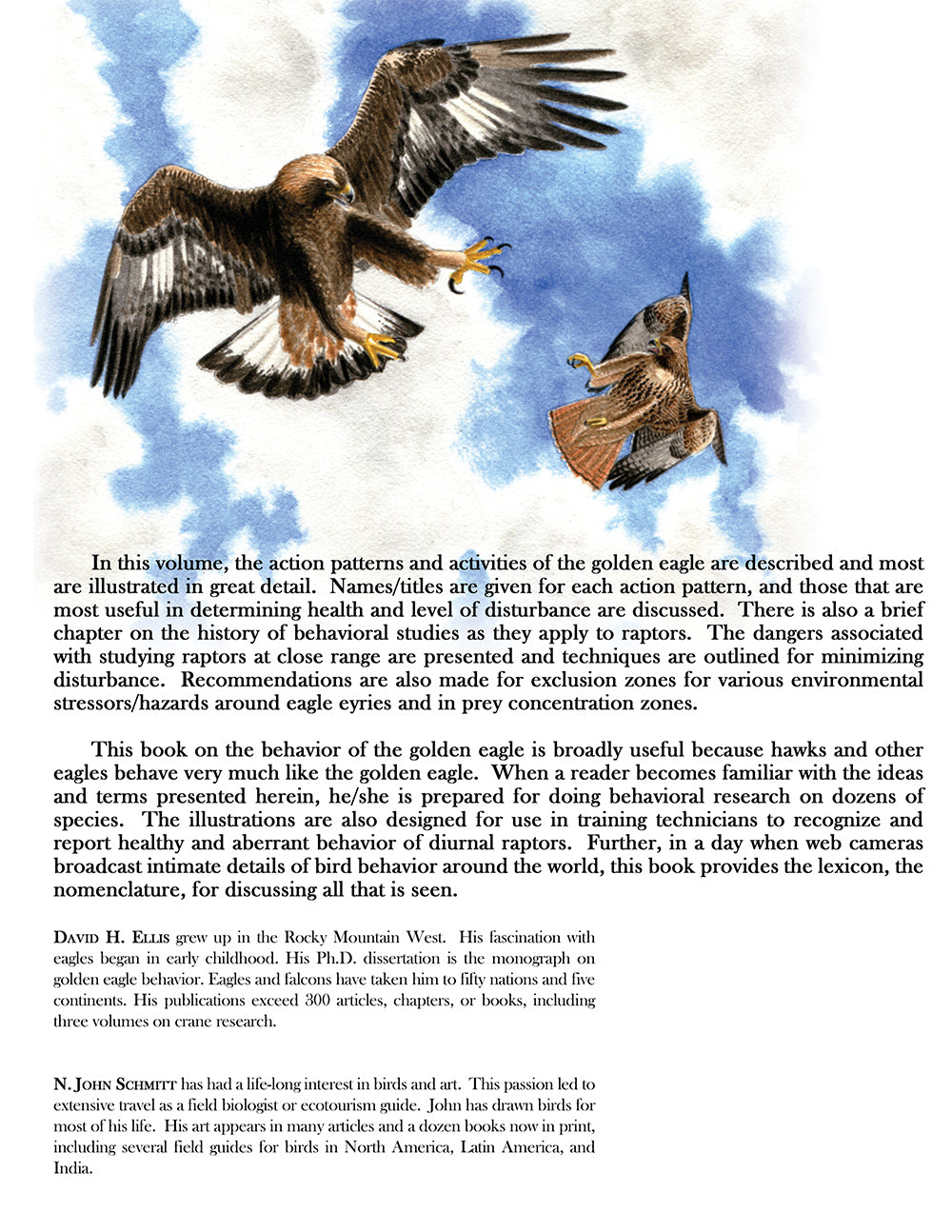
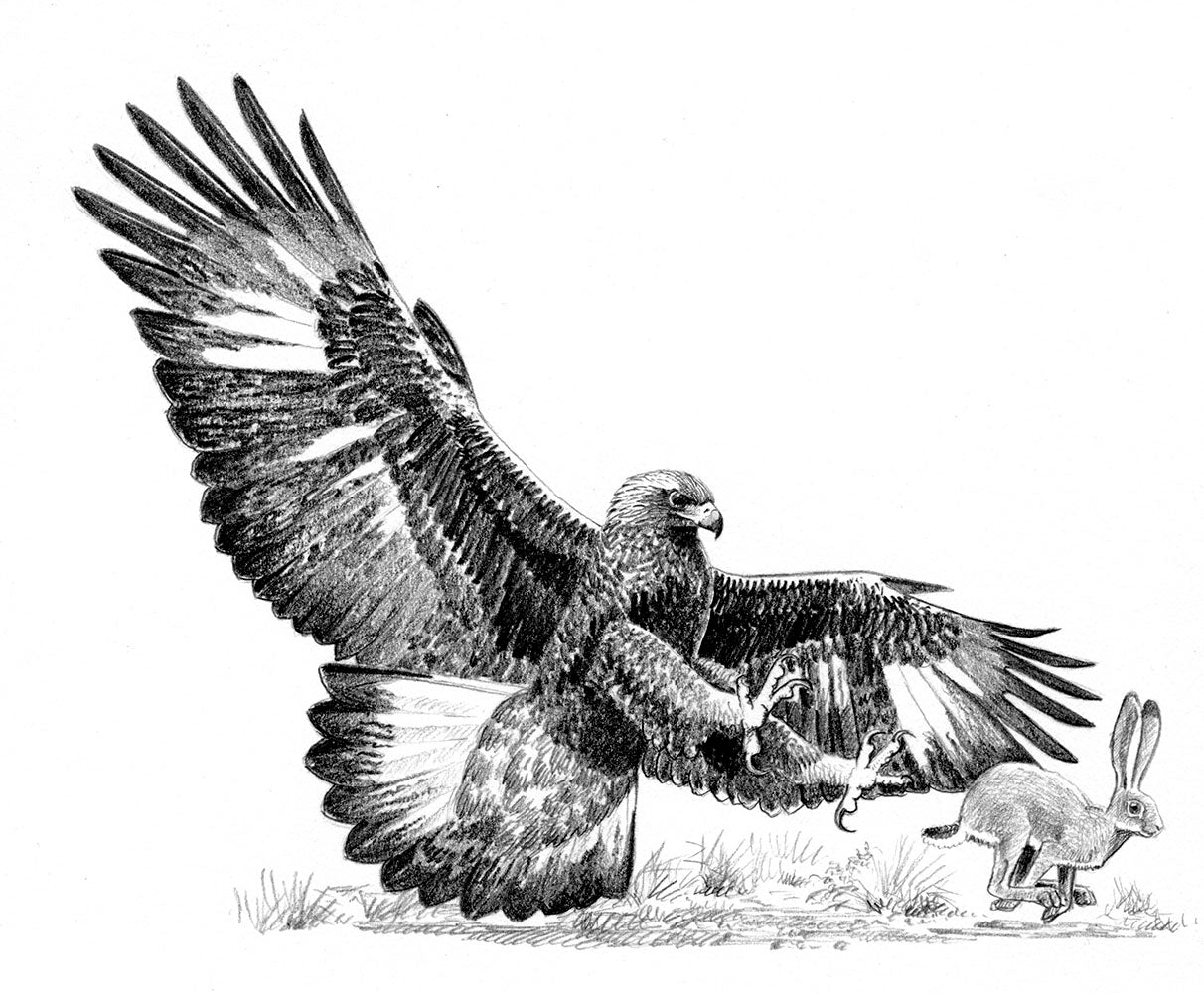
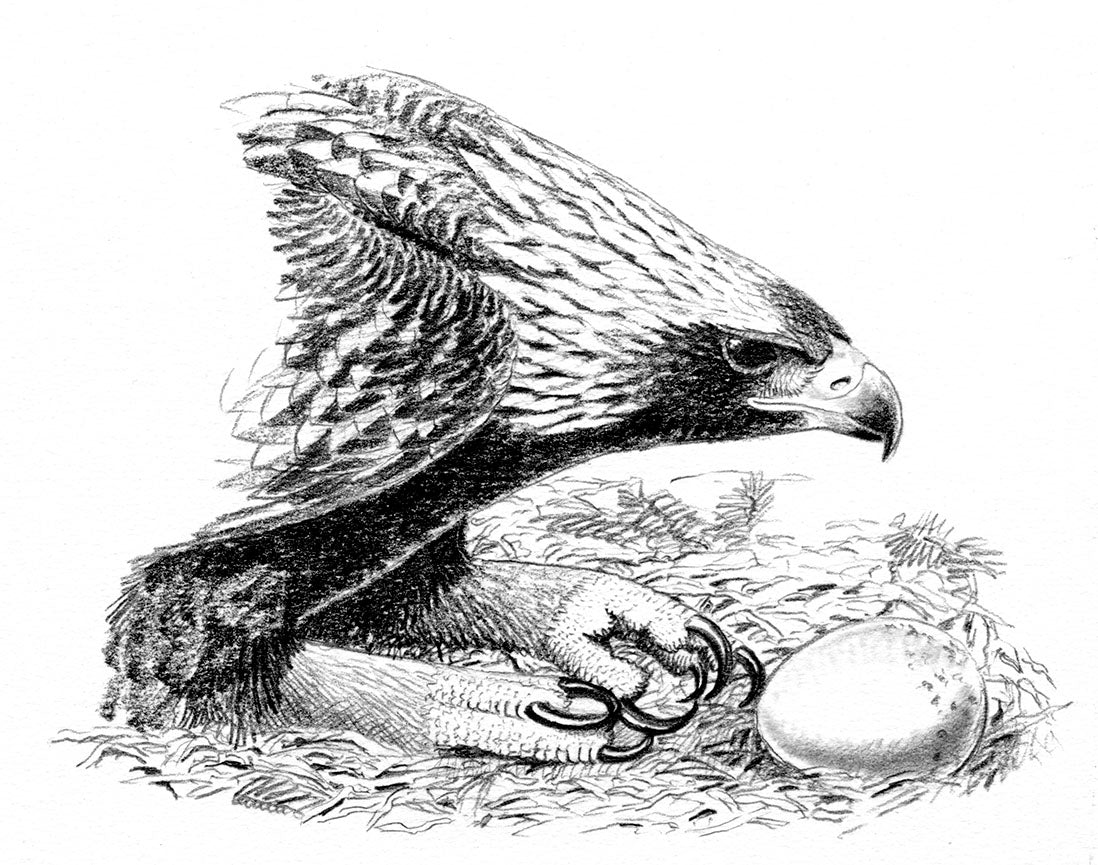
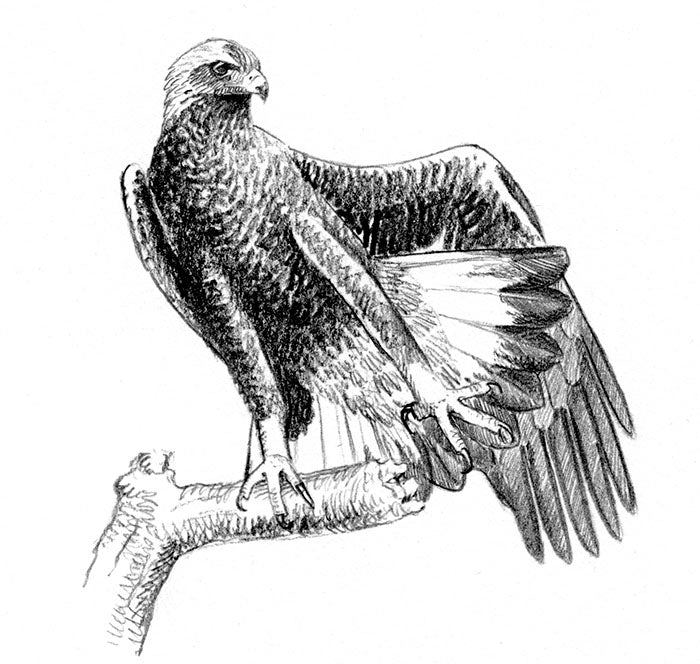
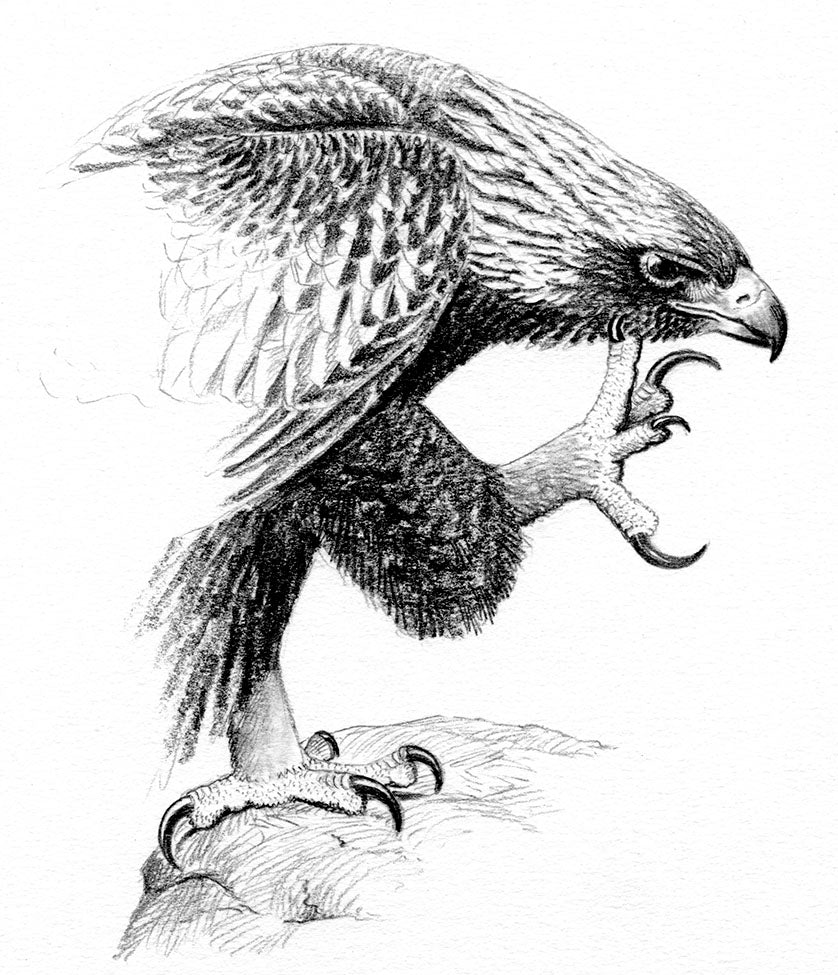
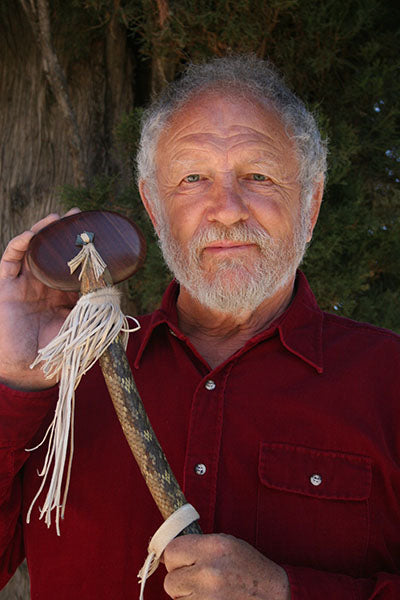
Behavior of the Golden Eagle: an illustrated ethogram
Details
By: David Ellis & N. John Schmitt
ISBN-13: 978-0-88839-078-3 [Trade Softcover]
ISBN-13: 978-0-88839-076-9 [Trade Hardcover]
Binding: Trade Cloth / Trade Paper
Size: 8.5" X 11"
Pages: 102
Photos: 0
Illustrations: 88
Publication Date: 2017
Description
In this volume, the action patterns and activities of the golden eagle are described and most are illustrated in great detail. Names/titles are given for each action pattern, and those that are most useful in determining health and level of disturbance are discussed. There is also a brief chapter on the history of behavioral studies as they apply to raptors. The dangers associated with studying raptors at close range are presented and techniques are outlined for minimizing disturbance. Recommendations are also made for exclusion zones for various environmental stressors/hazards around eagle eyries and in prey concentration zones.
This book on the behavior of the golden eagle is broadly useful because hawks and other eagles behave very much like the golden eagle. When a reader becomes familiar with the ideas and terms presented herein, he/she is prepared for doing behavioral research on dozens of species. The illustrations are also designed for use in training technicians to recognize and report healthy and aberrant behavior of diurnal raptors. Further, in a day when web cameras broadcast intimate details of bird behavior around the world, this book provides the lexicon, the nomenclature, for discussing all that is seen.
Author Biography
David also began a saker falcon conservation program in Mongolia. First, his team built 200 artificial eyries; then they found that most nests were readily adopted by raptors. Today a UAE-led follow-up project results in the fledging of more than 1000 extra falcons per year. He led efforts in avian satellite telemetry by developing harnessing techniques and deployed satellite transmitters (PTTs) on cranes or raptors on five continents. He pioneered behavior work with golden eagles and cranes and demonstrated that cranes have the most complex repertoire of stereotyped social displays of any animal group. His studies of responses to military jets showed that aircraft activities (other than bombing and strafing) are not harmful to raptors. His fieldwork on three expeditions to Argentina and Chile solved the mystery of the pallid falcon. He completed the first state-wide (Arizona) habitat inventory for the peregrine falcon. His monograph on golden eagle behavior is credited as the most complete behavioral development study for any vertebrate. Dozens of other publications expand our knowledge of bird distribution, marking techniques, medical procedures, capturing birds from helicopters, a complex propagation and medical record-keeping system, food habits, and anatomy. One publication even included names for several previously unnamed islands in the Pacific Ocean. Another book, this one non-scientific, is a history of his home town, Steamboat Springs, Colorado.

N. John Schmitt has had a life-long interest in birds and art. This passion led to extensive travel as a field biologist or ecotourism guide. John has drawn birds for most of his life. His art appears in many articles and a dozen books now in print, including several field guides for birds in North America, Latin America, and India.
Book Reviews